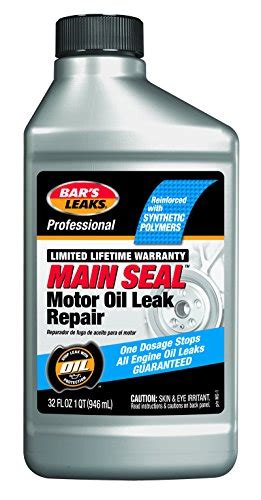Stop That Oil Leak: Effective Rear Main Seal Repair
A rear main seal leak is a frustrating and messy problem, often leading to unsightly oil stains on your driveway and potential engine damage if left unchecked. This comprehensive guide delves into the causes, diagnosis, and effective repair strategies for this common automotive issue. We'll equip you with the knowledge to tackle this repair, saving you money and the headache of a constantly dripping engine.
What is a Rear Main Seal?
Before diving into repairs, let's understand the culprit: the rear main seal. This crucial component is located at the rear of your engine, where the crankshaft exits the engine block. Its primary function is to prevent engine oil from escaping. Over time, this seal can wear down, harden, or become damaged, resulting in an oil leak.
Common Causes of Rear Main Seal Leaks
Several factors contribute to rear main seal failure. Understanding these causes helps in preventative maintenance and accurate diagnosis:
- Age and Wear: Like any rubber component, rear main seals degrade over time due to exposure to heat, oil, and vibration. This is a primary cause of leaks, especially in older vehicles.
- Crankshaft Misalignment: Improper installation of the crankshaft or damage during engine repairs can misalign the crankshaft, putting undue pressure on the seal and causing premature failure.
- Improper Installation: During engine assembly or rebuilds, incorrect installation of the rear main seal is a common cause of leaks.
- Oil Degradation: Using low-quality oil or failing to change the oil regularly can lead to oil degradation, causing the seal to swell or become brittle.
- Excessive Engine Vibration: Excessive vibrations, often caused by worn engine mounts or other mechanical issues, can stress the seal and contribute to leakage.
Diagnosing a Rear Main Seal Leak
Identifying a rear main seal leak requires careful observation and elimination of other potential sources. Here's how to pinpoint the problem:
- Visual Inspection: Look for oil stains on the engine's rear area, specifically around the transmission bell housing. However, be cautious, as oil can travel along the engine's underside.
- Fluid Check: Regularly check your engine oil level. A consistently dropping oil level indicates a leak somewhere in the system.
- Dye Test: A dye test can help pinpoint the source of the leak. A mechanic injects a dye into the oil system, and a specialized UV light helps visualize the leak's origin.
- Pressure Testing: In some cases, pressure testing the engine's lubrication system can identify the leak point.
H2: How difficult is it to replace a rear main seal?
The difficulty of replacing a rear main seal varies greatly depending on the vehicle's make and model. In some vehicles, it's a relatively straightforward repair that can be done with basic tools. However, in others, it may require significant engine disassembly, specialized tools, and considerable mechanical expertise. Many modern vehicles require the transmission to be removed, making this a more complex and labor-intensive job.
H2: Can I repair a rear main seal leak with sealant?
While stop-leak additives or sealants are available, they are often a temporary fix and rarely provide a long-term solution. These products may temporarily mask the leak but don't address the underlying problem of a failing seal. It's crucial to address the root cause for a lasting repair. In the long run, a proper seal replacement is always the superior solution.
H2: How much does it cost to replace a rear main seal?
The cost of replacing a rear main seal varies greatly depending on the vehicle, the labor involved, and the location of the repair shop. A relatively simple repair on an older vehicle might cost a few hundred dollars, while a more complex job on a newer vehicle could cost significantly more, potentially running into thousands of dollars. Labor costs are the primary driver of the price difference.
Repairing a Rear Main Seal Leak: Professional vs. DIY
Replacing a rear main seal is a challenging repair for the average DIY mechanic, especially in newer vehicles. The labor involved often necessitates specialized tools, considerable mechanical skill, and a comprehensive understanding of automotive systems. Consider the following factors:
- Your Mechanical Skills: Do you possess the necessary mechanical expertise and experience?
- Access to Tools: Do you have the required tools and equipment?
- Vehicle Complexity: How complex is the repair on your specific vehicle?
If you lack the experience or tools, it's best to seek professional help from a qualified mechanic. Attempting a complex repair without the necessary expertise can lead to more extensive damage and increased repair costs.
In conclusion, addressing a rear main seal leak promptly is essential to protect your engine and prevent further damage. While some simpler cases might be manageable as a DIY project, for most vehicles, seeking professional help is the most practical and effective approach. Understanding the causes, diagnosis, and repair options empowers you to make informed decisions about your vehicle's maintenance and repair.

